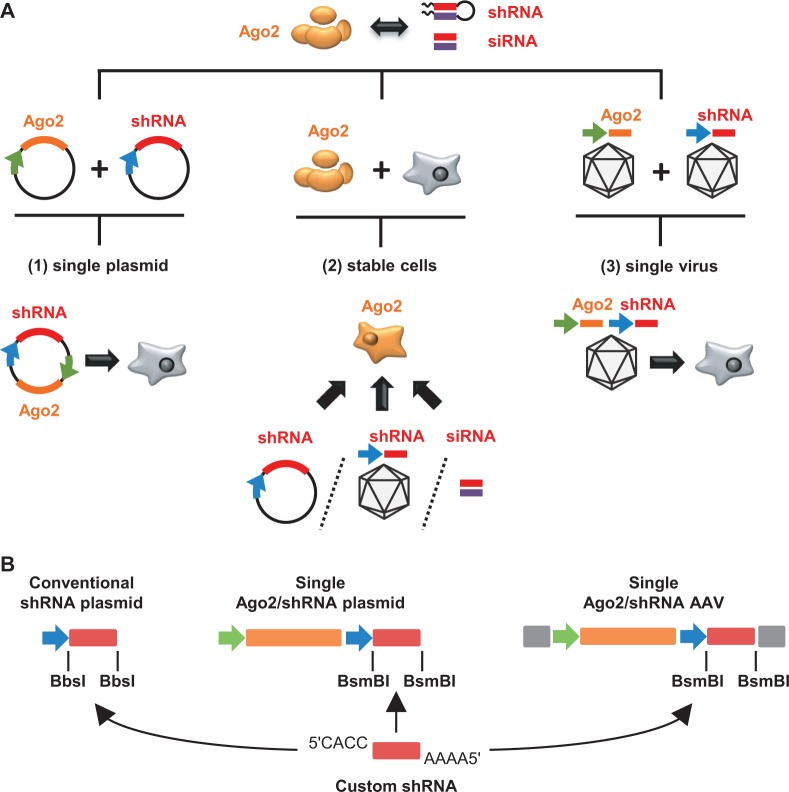Figure 1.
Three strategies to enhance si or shRNA efficiencies in mammalian cells (schemes). (A) Indicated on top is the strict si/shRNA dependency on Ago2 (drawn with its four major domains) for potent target mRNA cleavage. Depicted underneath are previous proofs-of-concept that intracellular Ago2 levels determine RNAi efficiency. Shown at the bottom are the three improved and broadly applicable strategies implemented here to overcome the rate-limiting nature of endogenous Ago2 and to increase RNAi potency: (1) Co-expression of shRNA together with Ago2 from a single plasmid, engineered to permit rapid and simple shRNA cloning; (2) stable Ago2 cDNA integration into cell lines that can be transfected with siRNAs or shRNA plasmids, or transduced with shRNA-encoding viral vectors; or (3) shRNA and Ago2 co-expressionin cis from a viral vector as alternative to transient plasmid transfection and to improve multiple aspects of in vivo RNAi. (B) Illustration of the compatibility and versatility of our different shRNA expression plasmids. As indicated by the arrows, an shRNA composed of two annealed oligonucleotides and carrying the indicated overhangs can be cloned into any of our constructs, either for mere shRNA expression (left), or for co-expression with Ago2 from a plasmid (center) or an Adeno-associated viral (AAV) vector (right, gray boxes symbolize AAV packaging signals). See panel A for other symbols/colors and Supplementary Figure S1 for more details.

